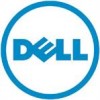Dell External OEMR 1435 User Guide - Page 136
COM1, and COM4. The default interrupt for COM1 and COM3
 |
View all Dell External OEMR 1435 manuals
Add to My Manuals
Save this manual to your list of manuals |
Page 136 highlights
Command The combination of an option and argument or just an option if no argument is required, such as in the following command line instances: utilname --option utilname --option=argument command line instance A series of valid commands, options, and arguments typed in the command line. For example, the Deployment Toolkit utility name and all necessary options and arguments as they are entered through the OS shell: A:>utilname --option --option=argument COMn The device names for the first through fourth serial ports on your system are COM1, COM2, COM3, and COM4. The default interrupt for COM1 and COM3 is IRQ4, and the default interrupt for COM2 and COM4 is IRQ3. Therefore, you must be careful when configuring software that runs a serial device so that you don't create an interrupt conflict. config.sys file The config.sys file is executed when you boot your system (before running any commands in the autoexec.bat file). This start-up file contains commands that specify which devices to install and which drivers to use. This file also contains commands that determine how the operating system uses memory and controls files. console redirection Console redirection is a function that directs a managed system's display screen, mouse functions, and keyboard functions to the corresponding devices on a management station. You may then use the management station's system console to control the managed system. controller A chip that controls the transfer of data between the microprocessor and memory or between the microprocessor and a peripheral device such as a disk drive or the keyboard. control panel The part of the system that contains indicators and controls, such as the power switch, hard drive access indicator, and power indicator. 136 Glossary















